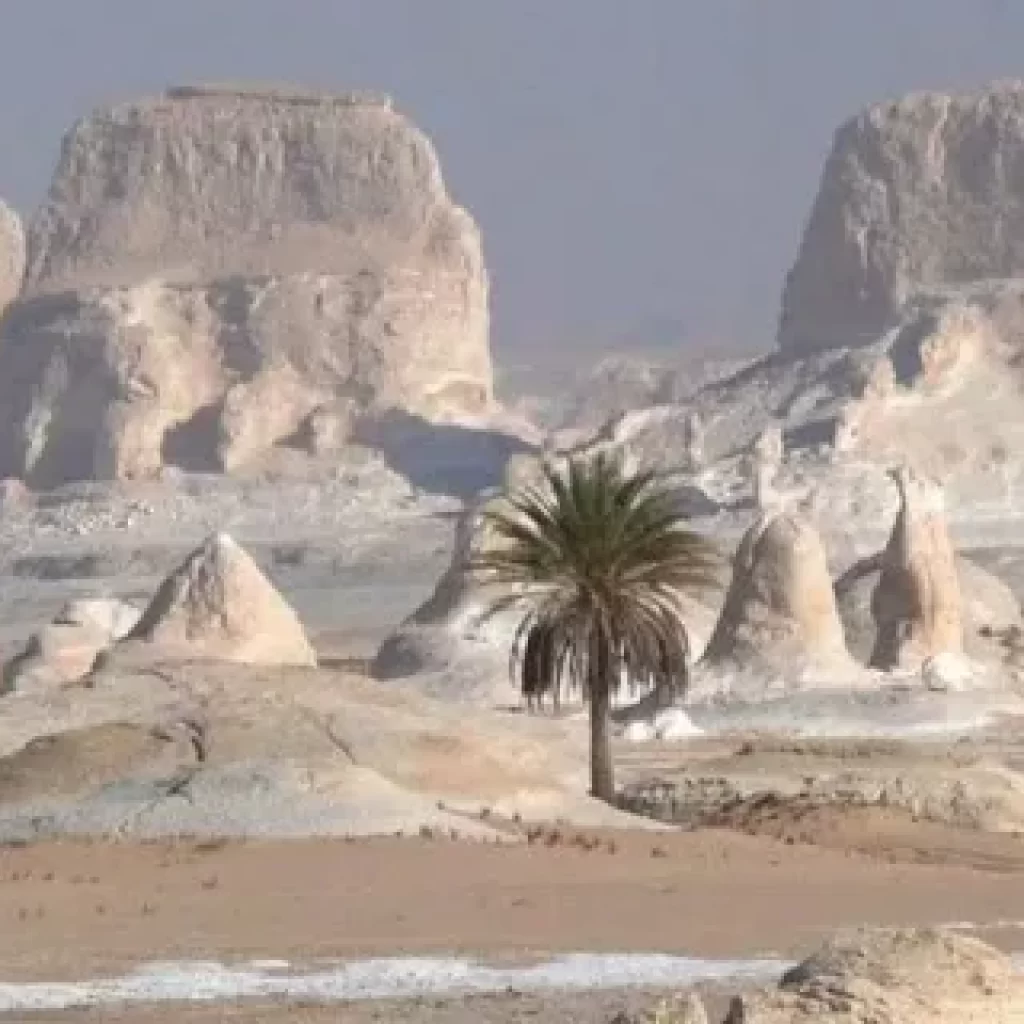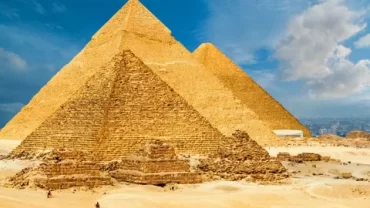Introduction: Desert in Egypt
Desert in Egypt, a land renowned for its ancient wonders and the mighty Nile River, is also home to vast and captivating deserts. These arid landscapes, stretching across the country, hold a mystique and beauty of their own. In this article, we embark on a journey to explore the deserts of Egypt, discovering their unique features, hidden treasures, and the intriguing stories they hold. From the scorching sands of the Sahara to the mesmerizing rock formations of the White Desert, we delve into the captivating world of the Desert in Egypt.

Table of Contents: Desert in Egypt
- The Desert in Egypt: An Overview
- The Sahara Desert: A Sea of Golden Sands
- The White Desert: A Surreal Landscape of Chalky Formations
- The Black Desert: A Volcanic Marvel
- The Western Desert: A Tapestry of Oases and Ancient History
- The Eastern Desert: A Coastal Wilderness
- The Siwa Oasis: A Verdant Jewel in the Desert
- The Desert in Egypt: An Overview:

1.The Desert in Egypt: An Overview
Egypt is predominantly a desert country, with deserts covering about 96% of its land area. These desolate landscapes have witnessed the rise and fall of ancient civilizations, leaving behind a rich tapestry of history and natural wonders. From the vast expanse of the Sahara to the unique rock formations of the White Desert, Egypt’s deserts offer a glimpse into the raw beauty of nature.
- The Sahara Desert: A Sea of Golden Sands:
The Sahara Desert, the world’s largest hot desert, covers a significant portion of Egypt’s eastern and southern regions. Its endless dunes, stretching as far as the eye can see, create an awe-inspiring spectacle. The Sahara offers adventurous opportunities, such as camel trekking and camping under the starlit sky, allowing visitors to experience the solitude and grandeur of this remarkable desert.
- The White Desert: A Surreal Landscape of Chalky Formations:
Located in Egypt’s western part, the White Desert is a captivating wonderland of pure white chalk formations sculpted by wind erosion. The ghostly shapes of mushroom-like pillars and otherworldly formations create an ethereal ambiance. Walking amidst this surreal landscape feels like stepping into a dreamscape, where imagination merges with the mystical beauty of nature.

- The Black Desert: A Volcanic Marvel:
Situated between the Bahariya and Farafra oases, the Black Desert derives its name from the dark volcanic rocks that dot the landscape. The contrast of the black rocks against the golden sand creates a striking visual spectacle. Exploring the Black Desert unveils ancient fossils, volcanic cones, and the remnants of prehistoric settlements, offering a glimpse into Egypt’s geological and archaeological past.
- The Western Desert: A Tapestry of Oases and Ancient History:
The Western Desert, also known as the Libyan Desert, is a vast expanse of arid land dotted with numerous oases. These oases, such as Siwa, Bahariya, and Dakhla, provide lush havens amidst the desert’s harsh environment. They also bear witness to ancient civilizations, with archaeological sites and historical treasures that reveal the rich heritage of this region.

- The Eastern Desert: A Coastal Wilderness:
Stretching along Egypt’s Red Sea coast, the Eastern Desert presents a unique blend of desert landscapes and stunning coastal views. Its rugged mountains, wadis (dry riverbeds), and hidden canyons offer opportunities for hiking, exploration, and even glimpses of ancient rock art. The Eastern Desert is a sanctuary for diverse wildlife, including rare species such as the Nubian ibex and the elusive sand cat.
- The Siwa Oasis: A Verdant Jewel in the Desert:
Nestled amidst the vast sands of the Western Desert, the Siwa Oasis is a lush paradise renowned for its natural springs, date palm groves, and ancient ruins. This remote oasis has a distinct culture influenced by its Berber inhabitants. Visitors can wander through the old town’s narrow streets, relax in natural hot springs, and gaze at the breathtaking sunset from the iconic Shali Fortress.

Conclusion: Desert in Egypt
Egypt’s deserts hold a captivating allure, offering a glimpse into the raw beauty and historical significance of these arid landscapes. From the vastness of the Sahara to the surreal formations of the White Desert and the oasis havens of the Western Desert, each desert has its own unique story to tell. As visitors venture into these desert realms, they are rewarded with an experience that merges adventure, history, and the sheer wonder of nature.

FAQs: Desert in Egypt
- Q: Which is the largest desert in Egypt?
A: The Sahara Desert is the largest desert in Egypt, covering a significant portion of the country’s eastern and southern regions. - Q: Are there any unique rock formations in Egypt’s deserts?
A: Yes, the White Desert is known for its unique chalk formations, creating a surreal landscape of otherworldly shapes. - Q: Can visitors explore ancient ruins in Egypt’s deserts?
A: Yes, Egypt’s deserts are home to various ancient ruins and archaeological sites, providing glimpses into the country’s rich history. - Q: Are there any oases in Egypt’s deserts?
A: Yes, Egypt’s deserts house several oases, such as Siwa, Bahariya, and Dakhla, which offer lush havens amidst the arid landscapes. - Q: What activities can one engage in while visiting Egypt’s deserts?
A: Visitors can partake in activities such as camel trekking, camping, hiking, and exploring ancient rock art during their desert adventures. - Q: Are there any wildlife species unique to Egypt’s deserts?
A: Yes, Egypt’s deserts are home to diverse wildlife, including rare species like the Nubian ibex and the sand cat. - Q: How can one access the deserts in Egypt?
A: The deserts in Egypt are accessible through various means, including guided tours, private vehicles, and organized expeditions, ensuring a safe and memorable exploration experience.
In conclusion, Egypt’s deserts offer a mesmerizing journey into a world of endless sands, unique rock formations, ancient ruins, and vibrant oases. Exploring these desolate landscapes provides an opportunity to immerse oneself in the raw beauty and rich history of Egypt, creating unforgettable memories of a truly remarkable adventure.





Comment (0)